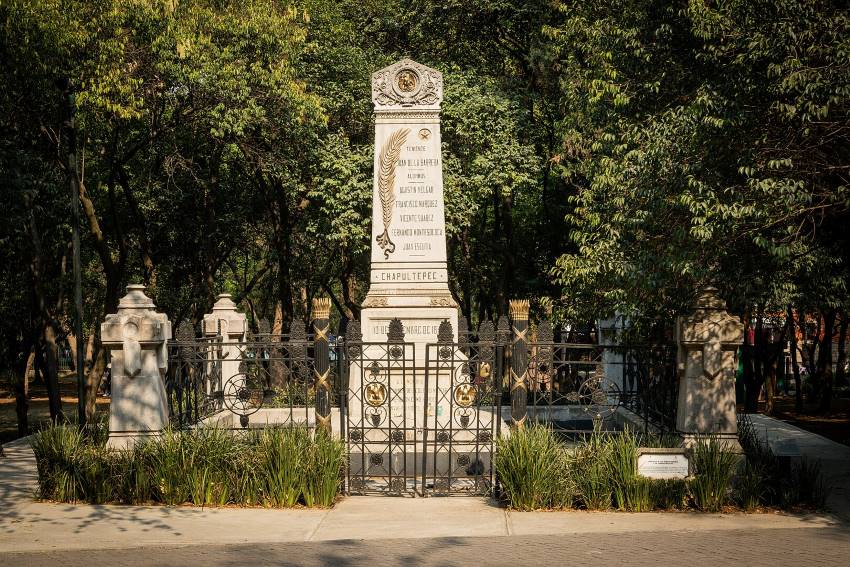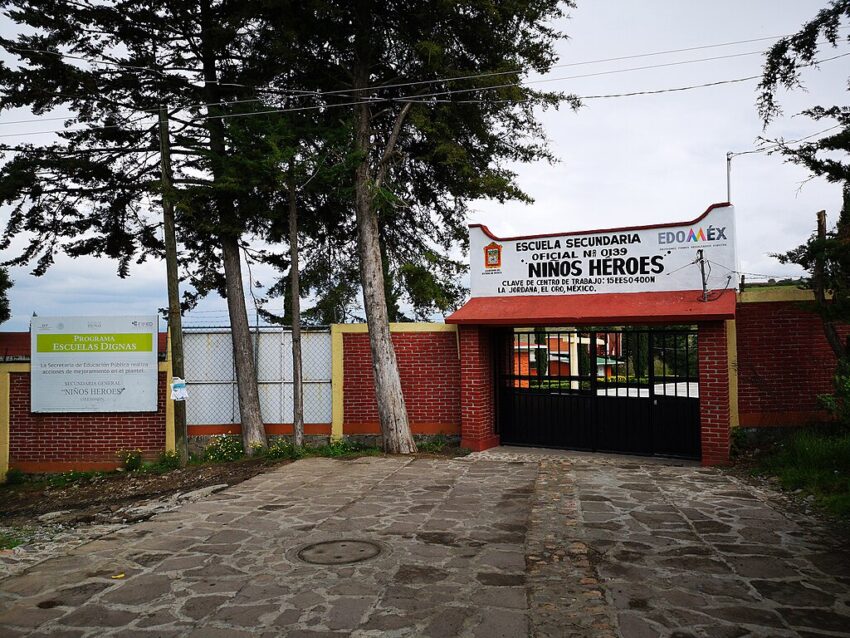No Mexico city journey has been completed without visiting the Saapaldebec Park, a comprehensive urban forest area, which has some of the country’s largest monuments, museums and art galleries. It is difficult to imagine the bloody park during the Mexican-American War from 1846 to 1848 to a park that brings such peace amidst the frenzied speed of the city.
At the end of the war, on September 13, 1847, about 2,000 US troops, led by General Winfield Scott, attacked the Capaldebac castle, and at the time, military caddy had a military academy. This is a decisive American victory, which proved to be important to the US occupation of Mexico Next link to the northern territories of MexicoIncluding Alta California, Arizona and New Mexico.
In the American Joint imagination, Mexico’s invasion receives much attention than a domestic war for more than a decade. But war is important in American history: it helped to ensure the expansion of the Northern country and gave political and geographical weight to the doctrine of obvious fate. Texas Revolution is a part of the technology of the Texas Revolution – the 1836 events such as the Allao War are most widely remembered, perhaps because it is a loss. Failure calls stories, gives people a reason to march, march and legend.
In Mexican national consciousness, the Sapaldebec War Ninos (Bai Heroes) is said to be unprofessional by General Nicholas Bravo’s six cadets from the academy. Auguston Melkar, Fernando Montez de Oka, Francisco Margvez, Juan de La Barera, Juan Escutia and Visent Suarez fought for their last breath to protect the fort. The last remaining Cadet Escutia is said to have covered itself on the Mexican flag before jumping from the castle to prevent US forces from capturing it.
The names and exploitation of Nineos Heroes are learned by Mexican School students as part of the national curriculum determined by the Ministry of Education. They are remembered as heroic martyrs who have thrown bullets and bontes, and want to die for their country rather than surrender to invasion forces. “The news is to love your country to death,” said Adolpo Zambrono Mexico News Daily, a sociologist at the University of Peelfield.
The main gateway to the safaldeb, at Puerta de Los Leone, The Luminous white altar patriotic The (altar of the homeland) comes behind the iron gates. Built between Italian marble between 1947 and 1952, the monument recalls the life of the lost in the Mexican-American war. Six cetts are represented with high pillars, each crowned towards an eagle and a torch sky. It is a homeland in the center of the monument, which is personally personally dominated by a tendon tribal woman, pulling a cat in the national flag. Look closely beyond the monument, you will see The Sapaldebec Fort is directly above the mountainBy flying from its peak – restoring the identity of the description, denying that the American flag has always flown.

Truth, fiction and historical ambiguity
Throughout Mexico, almost every city and city, streets, plasas and even bus stations have the name of Nineos Hiros. Although their story is widely shared, it is very difficult to separate the truth from fiction. The myths around the caddads have long been a historical fact. For example, official government sources emphasize that they are the ultimate defenders of the fort, despite the lack of evidence. Their names, now carved in stone, did not appear in the historical book until 1883 after 36 years of war.
To begin with, the idea of kattes is wrong is misleading. When I was under two years of age, the remaining four were 20 years old, including Juan Eskudia. Juan de La Barera, 19, is actually the Lieutenant post of military engineers. Referring to them as boys raises the emotional vibrations of their sacrifice and establishs them as a person in national imagination, strengthening the values of duty, faith and patriotism.
Their youthful figure makes them more than exemplary. The planned innocent on Nineos Hiros reflects the childhood of the Mexican Republic. Two decades after the Independence of Mexico in the 1840s, it was a weak and deep divided nation, struggling to define itself against internal fighting and foreign aggression. The story of the six brave cadets became a powerful metaphor for a nation that sticks in sovereignty, standing firmly against a powerful invasion power.
Some critics have questioned whether there were six Ninos Hiro in the form of recall today. Historical accounts, however, show that about 50 caddes, in violation of the Mexican army, are staying at the Sabuldebec Fort to fight with the Mexican Army. Although their decision is irresponsible, it has been redesigned as an act of bravery and patriotic sacrifice.

On September 13, 1882, during the presidency of Manuel Gonzalas Floreus, the four -year period of indirect rule during the dictatorship of Porpirio Thiaz. The ceremony opened a Los Nineos Heros monument, which is still standing at the foothills of the Sapaldebec Castle, and designed by Ramon Rodriguezi, one of the cadat, which was captured during the war. That tradition continues today: every year the president reads the names of Nineos Hiros in a La Patria Memorial on September 13.
Did Juan Eskudia really cover herself on the flag?
The Sapaldebec Fort is now a museum, which is protected as the rule of Emperor Maxilian under the French occupation. Visitors to climb the winding track will find the most lifetime statues of Ninos Heros. In the central staircase of the fort, the 1967 ceiling of Gabriel Floreus depicts the death of Juan Eskutia, covered in the Mexican flag. But did that really happen?
Evidence Eskudia is not a cadet, but a soldier in the San Plas Battalion. The unit, installed in Nairit in 1823, was guided by the low known figure of Belippe Santiago Xicoténcatl during the Saapaldebec War. According to the witnesses of witnesses, Zigotenkat was shot dead by US forces as he tried to keep his barn’s flag. When he fell, his companions wrapped his body on the flag and buried it with it.

The story of Xicoténcatl was later transferred to Eskutia, and she was redefined as a boy to raise the play. In 1947, the residues of the Zigodencodl were discharged and eventually attached to the remnants of six people found in Saabaldebec, and at the entrance of the park, Nineos is said to be Heroes underneath the park’s entrance – this proves to be difficult to confirm.
Significantly, a Nahua officer of a nahua officer from Zigotenkat Dilaxkala, while Nineos Hroz is always portrayed as a light -colored, European -look ketat. This difference reveals how the post -independence Mexican nationalism has often concessioned Europeanized citizenship. By transforming the story of patriotic sacrifice to Juan Eskutia, a person was rewritten as youth and white, destroying the participation of a myth.
What does Ninos Horace tell us about Mexico?
Regardless of how true their story is, the prolonged importance of the heroes of the heroes reflects the need for the early national state of converting the myths to the merits of the heroes. Following the 1848 Quadaloop Hitelolo Treaty, their legends are comforting for almost half of Mexico’s national territory, and is still causing emotional vibrations on Mexican. In an article in 2005, the literary critic of Mexico, born in Mexico, remembers the influence of Nineos Horos, who remembers his childhood, “the heroes who were heroes, besides being boys, should add a stressful demand on my own heroism. As the Adolpo Zambrono at the University of Peelfeld said, “I have an area that believes that the myth is actually happened even though there is no evidence.”

When we ask about President Donald Trump’s renewed expansion aspirations, it is impossible to consider such a rhetoric as an unimaginable. However, a close view of this period in Mexican history reveals that regional occupation has long been a sector of US foreign policy. The wounds of the Mexican-American War operates deep into the joint memory of Mexico, and they continue to design how the country understands relationships with its North neighbors. Nineos Hero’s myth is a way of implementing those traditions – it is not a shame to review the failure, but rather a heroic model of sacrifice.
Shal Bandari is a British-Indian writer, a hurricane love with Mexico. He holds MPHIL in Latin American studies at the University of Cambridge. Has been published in publications including his writing WokeOvarian OjarascaOvarian Little white lies And Magazine. In 2019-2020, he conducted a series of literary workshops with tribal poets in the south of Mexico with the support of the Royal and ancient International Scholarship.
(Tagstotranslate) Battle of Chapultepec (T) Chapultepec (T) Historical Myths (T) Mexican-American War (T) Niños Héroes
Story Credit








